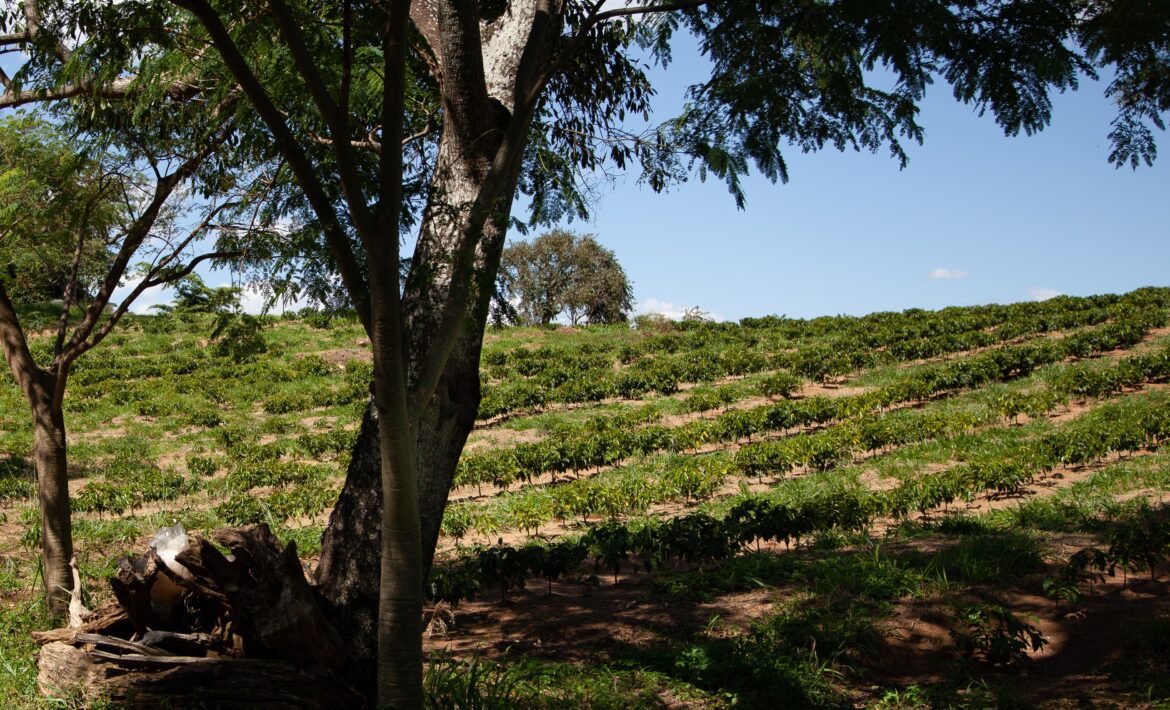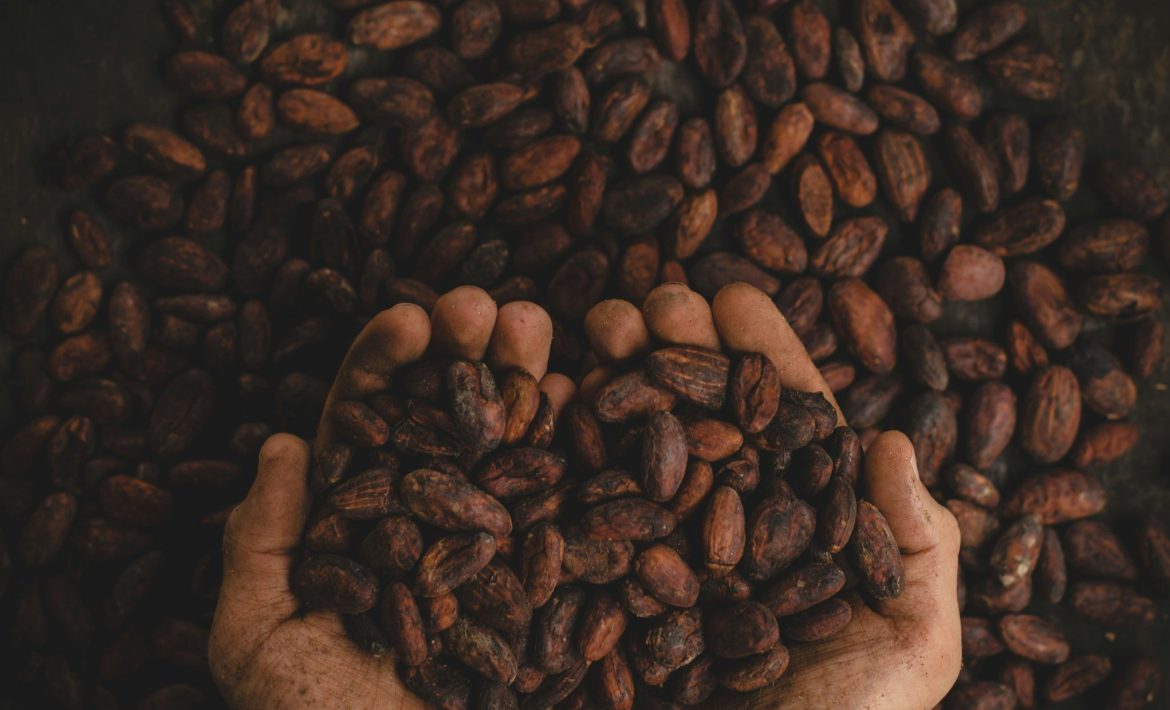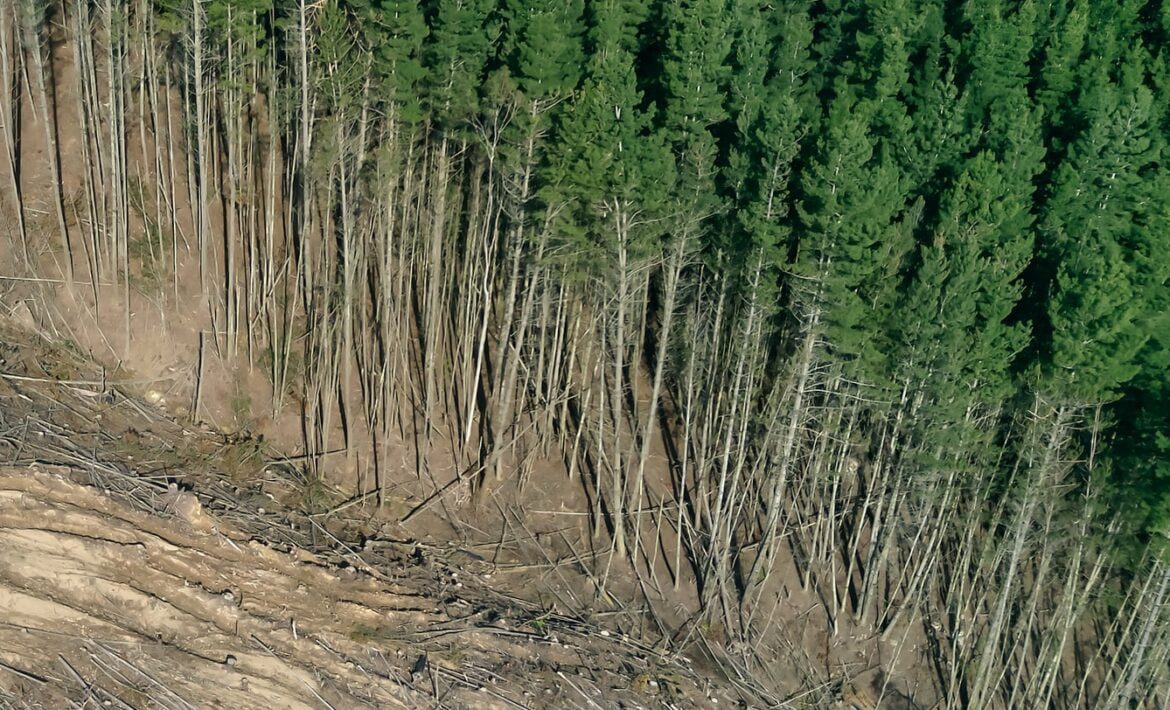
Re-designing Agricultural Landscape: Prioritising Ecology
by Beatrice Trascau
Global food demands have been increasing steadily since 1960. Meeting these growing demands would require a doubling of the quantity of crops produced worldwide by 2050 [1]. Currently, these demands are met by increasing the total area available for agriculture, through land clearing and through more intensive use of existing croplands [1]. However, this could have devastating effects on the environment, as land clearing and intensive fertilizer-use threaten biodiversity and increase greenhouse gas emissions [2,3]. The extent to which these methods will affect our planet will largely depend on the strategies chosen to solve the problem of how we can increase production to meet growing demands while also prioritising ecology and conservation. In this article, I will discuss the two popular strategies used to increase productivity whilst also conserving biodiversity (land sharing vs. land sparing). Stepping outside of these two strategies may be the key to this problem.
Recent agricultural expansions have mainly happened through clearing more land for agriculture, with these expansions mainly happening in the tropics [4]. As this has devastating effects on the environment, land sparing has been proposed as a strategy to meet increasing crop demands while also mitigating environmental effects. In land sparing scenarios, the land used for crops is entirely separated from the land used for conservation, in order to counteract the negative environmental effects of agriculture [5]. Studies have previously noted that land sparing strategies are more effective for mitigating greenhouse gas emissions and conserving biodiversity, especially in the case of threatened species [5,6]. However, meeting demands by using land sparing strategies would require significant agricultural intensification on existing crop lands. This could result in water degradation, soil erosion due to increased fertilizer use, higher energy consumption, and widespread pollution [4].
Contrastingly, land sharing strategies aim to use wildlife-friendly farming methods to integrate biodiversity conservation and food production on the same land [5]. Land sharing strategies will use natural solutions therefore reducing the fertilizer and pesticide use [7]. This means that agricultural landscapes employing land sharing strategies can be more sustainable and provide better dispersal and rage shifting opportunities for species [7]. However, critics also draw attention to the fact that low-yield farming may still affect surrounding non farmed habitats and that farmlands usually have a lower biodiversity, even when the least detrimental methods are used [6].
While both land sharing and land sparing have their own set of advantages and disadvantages, new evidence suggests that other strategies could also be effective in tackling the issue of increased global food demand. For example, a traditional farming method practiced by farmers in south Zhejiang (China) for over 12,000 years has been shown to have higher yield stability while also requiring less pesticide and fertilizer input [8]. Here, rice plants are grown in a mutually-beneficial coculture with fish, where rice plants provide shade and reduce water temperature, and fish consume rice plant pests and seem to reduce diseases such as rice sheath blight [8].
In conclusion, while land sharing and land sparing can be effectively used to produce enough food for a growing demand while mitigating the environmental impacts of agriculture, we still have limited data to confidently decide which one of these two strategies is the better choice. Additionally, entirely different strategies can be used effectively, as is the case of the traditional rice-fish co-cultures in south Zhejiang. Therefore, the decision on how best to increase yields whilst also maximizing conservation value should be made on a case by case basis. This should also not be limited to either land sharing or land sparing, but take into account the experience of indigenous communities and take advantage of traditional methods, which have been developed over thousands of years.
References:
[1] Tilman, D., et al., 2011. Global food demand and the sustainable intensification of agriculture. Proceedings of the national academy of sciences, 108(50):.20260-20264. https://doi.org/10.1073/pnas.1116437108, [last accessed 22 October 2021][2] Dirzo, Rodolfo, and Peter H. Raven, 2003. “Global state of biodiversity and loss.” Annual review of Environment and Resources 28: 137-167. https://doi.org/10.1146/annurev.energy.28.050302.105532, [last accessed 22 October 2021]
[3] Burney, J.A., Davis, S.J. and Lobell, D.B., 2010. Greenhouse gas mitigation by agricultural intensification. Proceedings of the national Academy of Sciences, 107(26): 12052-12057. https://doi.org/10.1073/pnas.0914216107, [last accessed 22 October 2021]
[4] Foley, J.A., et al., 2011. Solutions for a cultivated planet. Nature, 478(7369): 337-342. https://doi.org/10.1038/nature10452, [last accessed 22 October 2021]
[5] Phalan, B.,et al., 2011. Reconciling food production and biodiversity conservation: land sharing and land sparing compared. Science, 333(6047): 1289-1291. DOI: 10.1126/science.1208742, [last accessed 22 October 2021]
[6] Green, R.E.,et al., 2005. Farming and the fate of wild nature. Science, 307(5709): 550-555. DOI: 10.1126/science.1106049, [last accessed 22 October 2021]
[7] Law, E.A., et al., 2015. Better land-use allocation outperforms land sparing and land sharing approaches to conservation in Central Kalimantan, Indonesia. Biological conservation, 186: 276-286. https://doi.org/10.1016/j.biocon.2015.03.004, [last accessed 22 October 2021]
[8] Xie, J., et al., 2011. Ecological mechanisms underlying the sustainability of the agricultural heritage rice–fish coculture system. Proceedings of the National Academy of Sciences, 108(50): 1381-1387. https://doi.org/10.1073/pnas.1111043108, [last accessed 22 October 2021]



